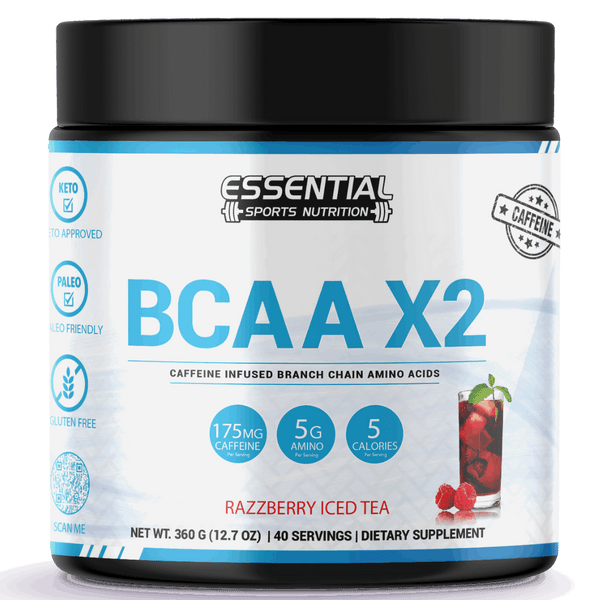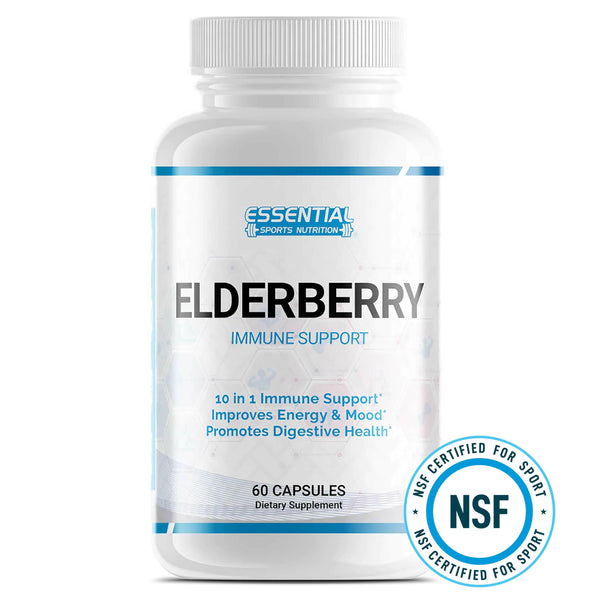Lat Pulldowns: Proper Form, Muscles Worked, and Variations for Your Workout
To master Lat Pulldowns, sit comfortably, gripping the bar just wider than your shoulders. Pull it down to your upper chest, engaging your elbows and shoulder blades. This boosts your upper body while targeting key muscles like latissimus dorsi, rhomboids, and traps. Focus on core engagement and form, keeping a straight back. Variations like wide-grip, straight-arm, and reverse-grip lat pulldowns target different muscle groups. Neutral-grip works the trapezius. Incorporate these into your routine, 1-3 times weekly, progressively increasing weight for muscle challenge. Exploring more variations and techniques can deepen the benefits for your overall strength and muscle development.

Key Takeaways
- Engage shoulder blades for maximum muscle activation
- Vary grip positions to target different muscle groups effectively
- Focus on proper posture and form to prevent injury
- Include lat pulldowns in upper body routines for balanced development
- Experiment with different variations like wide-grip or reverse-grip for muscle targeting
Benefits of Lat Pulldowns
Lat pulldowns offer an important upper body workout, targeting essential muscles like the latissimus dorsi, rhomboids, trapezius, and more, to enhance strength, posture, and overall performance. Engaging in lat pulldowns strengthens your back muscles and improves your pulling performance in various activities. This exercise is vital for preventing shoulder injuries and muscle imbalances, ensuring your upper body remains strong and well-supported. The different grip variations available with lat pulldowns allow you to effectively target specific muscles, leading to enhanced upper-body strength and functionality. By activating key muscles such as the lats, shoulders, and arms, lat pulldowns stimulate muscle growth and promote functional strength, which can benefit you in various daily tasks and sports activities. Incorporating lat pulldowns into your workout routine can greatly improve your overall physical fitness and well-being.
Proper Lat Pulldown Form
When performing lat pulldowns, make sure you sit comfortably with your knees bent at a 90-degree angle for ideal form. Remember to grip the bar slightly wider than shoulder-width to target your latissimus dorsi muscles effectively. Focus on pulling the bar down towards your upper chest, engaging your elbows and shoulder blades to activate the necessary muscles for a successful workout.
Form for Lat Pulldowns
To perform lat pulldowns with proper form, make sure you are comfortably seated at the machine with your knees bent at a 90-degree angle. Here are some key points to keep in mind:
- Adjust the bar height so it's within reach but not too low.
- Use a wide overhand grip on the bar, slightly wider than shoulder-width apart.
- Pull the bar down towards your upper chest while engaging your elbows and shoulder blades.
- Hold briefly at the mid to upper chest, squeezing your shoulder blades together, then return to the starting position slowly.
Key Points for Lat Pulldowns
For proper execution of lat pulldowns, make sure your posture is aligned, maintain a neutral spine, and engage the correct muscle groups for best results. Here are some key points to remember during your lat pulldown workout:
| Key Points | Details |
|---|---|
| Sitting Position | Sit comfortably, with feet flat on the floor, chest up, and shoulders pulled back. |
| Grip | Use a wide overhand grip to target the latissimus dorsi effectively. |
| Range of Motion | Pull the bar down towards your chest, stopping when it reaches chin level. |
| Muscle Engagement | Focus on using your back muscles, not your forearms, to perform the movement correctly. |
| Spine Alignment | Keep your spine neutral throughout the exercise to prevent injury and maximize results. |
Muscles Targeted in Lat Pulldowns
When performing lat pulldowns, your primary focus is on engaging the latissimus dorsi, the largest back muscle essential for shoulder movement. Additionally, the rhomboids, trapezius, and deltoids all contribute to stabilizing and strengthening your upper body during this exercise. Understanding the targeted muscle groups and their activation is key to developing a strong and well-defined back.
Targeted Muscle Groups
The lat pulldown exercise primarily targets the latissimus dorsi muscle, which is the largest muscle in the back. You also engage other important muscles for a thorough upper-body workout during this exercise. Here are the key muscle groups targeted in lat pulldowns:
- Upper Lats: Emphasized in wide-grip lat pulldowns.
- Lower Lats: Targeted more effectively in close-grip variations.
- Trapezius and Rhomboids: Engaged to support back stability.
- Deltoids, Biceps, and Forearms: Actively involved in assisting the primary muscle groups.
Activation During Exercise
Targeting key muscle groups like the upper lats and lower lats, lat pulldowns engage a variety of muscles to provide a thorough upper body workout. The primary focus is on the latissimus dorsi, responsible for shoulder extension and adduction. Grip variations affect muscle activation, with wide grips targeting the upper and narrow grips targeting the lower and middle back muscles. The rhomboids and trapezius muscles are also engaged to support scapular movement and shoulder stability. While the forearms and biceps play a secondary role in assisting the back muscles during the pulling motion, proper form and technique are essential for maximizing muscle activation in the targeted areas during lat pulldowns.
Importance of Back Strength
Enhance your back strength and overall upper body musculature by engaging in lat pulldowns, a workout that targets key muscles like the latissimus dorsi, rhomboids, and trapezius. Lat pulldowns primarily target the latissimus dorsi, the largest back muscle responsible for pulling movements. Engaging in this exercise also involves the rhomboids and trapezius, supporting shoulder blade movement and upper back strength. The latissimus dorsi comprises upper, middle, and lower fibers, all activated during lat pulldowns for a thorough back workout. By consistently engaging these muscles, you can improve your posture, enhance pulling strength, and achieve a well-rounded upper body musculature.
Tips and Common Lat Pulldown Variations
Among the various options to diversify your lat pulldown routine, exploring common variations can enhance your back workout and target specific muscle groups effectively. Wide-grip lat pulldowns are excellent for targeting the upper lats and emphasizing the latissimus dorsi muscle, helping to broaden the back. If you want to isolate the lower lats more effectively, consider incorporating straight-arm lat pulldowns into your routine. For engaging the trapezius muscles and altering the shoulder position for muscle activation, opt for neutral-grip lat pulldowns. If you aim to focus on the biceps and forearms while still engaging the back muscles, the reverse-grip lat pulldown variation is ideal. Additionally, challenging your core stability and coordination can be achieved with tall-kneeling lat pulldowns. Performing the exercise can also effectively target the back muscles. Incorporating these variations into your workout routine can help you achieve a well-rounded back workout with targeted muscle engagement.
Tips for Lat Pulldown Technique
To optimize your lat pulldown technique, focus on engaging your shoulder blades by pulling them down and back throughout the exercise. This guarantees that you effectively target the lat muscles and reduce other muscle groups' involvement. To further enhance your lat pulldown technique, consider the following tips:
- Maintain a neutral spine: Keeping your spine in a neutral position helps prevent unnecessary strain on your lower back and promotes better alignment during the exercise.
- Control your motion: Perform the lat pulldown with a controlled and smooth motion to maximize muscle activation and avoid jerky movements that can lead to injury.
- Pull the bar towards your upper chest: Aim to pull the bar down towards your upper chest area to fully engage your lats and get the most out of each repetition.
- Avoid using momentum: Steer clear of using momentum or swinging your body to pull the bar down. This ensures that you are relying solely on your back muscles to perform the movement effectively.
Programming Lat Pulldowns Into Workouts

When incorporating lat pulldowns into your workout routine, it is important to consider the frequency and progression of this exercise for the best back muscle development. Aim to include lat pulldowns in your workouts 1-3 times per week to target your back muscles effectively. To see continued strength gains and muscle growth, progressively increase the weight you use while maintaining proper form. Additionally, vary your grip widths and hand positions to ensure you target different muscle groups within your back. This variation will help you achieve a well-rounded development of your back muscles. By focusing on proper form and technique throughout your lat pulldown workouts, you can prevent injuries and maximize the benefits to your back muscles. Consider using lat pulldowns as a foundational exercise in your upper body workout routines for balanced muscle development.
Conclusion

So, now you know the benefits of lat pulldowns, proper form, and various variations to keep your workouts challenging. Like a well-oiled machine, incorporating lat pulldowns into your routine will help you build a stronger, more defined back. Remember to focus on technique, target those muscles, and switch up your variations to keep things interesting. Keep pulling down to reach your fitness goals!
Common Mistakes, Benefits of the Lat Pulldown, and Muscles Worked FAQs
Q: What muscles are worked during lat pulldowns?
A: Lat pulldowns primarily target the latissimus dorsi muscles in the back and engage the shoulders and arms muscles.
Q: What are the benefits of performing lat pulldowns?
A: The benefits of lat pulldowns include strengthening the back muscles, improving posture, enhancing upper body strength, and aiding in overall muscle development.
Q: How should I perform a close-grip lat pulldown?
A: To do a close-grip lat pulldown, use a handle attachment with hands positioned closer than shoulder-width apart on the bar. Pull the bar down towards your chest while keeping your elbows close to your body.
Q: What is the difference between a close-grip lat pulldown and a wide-grip lat pulldown?
A: The main difference lies in the hand positioning on the bar. In a close-grip lat pulldown, hands are closer together, while in a wide-grip lat pulldown, hands are wider apart, targeting slightly different areas of the back muscles.
Q: What is a common mistake to avoid when performing lat pulldowns?
A: A common mistake is using momentum to pull the weight instead of engaging the back muscles. Focus on pulling the bar down using a controlled motion and avoid swinging or arching your back.
Q: Are there any variations or alternatives to the traditional lat pulldown exercise?
A: Yes, variations include reverse-grip lat pulldowns, behind-the-neck lat pulldowns, neutral grip lat pulldowns, and straight arm lat pulldowns, offering different ways to effectively target the back muscles.
Q: How can I ensure I perform the lat pulldown exercise correctly?
A: To perform the lat pulldown correctly, sit upright, lean back slightly, engage your back muscles to pull the bar down towards your chest, and focus on pulling your elbows down and back.
Q: Which Variation of Lat Pulldown Is Best?
A: The best variation of lat pulldown depends on your goals and muscle focus. Wide-grip targets upper lats, close-grip emphasizes lower lats and triceps, straight-arm isolates lats, while behind-the-neck may risk shoulder injuries. Choose wisely for maximum gains.
Q: What Are the Benefits of Lat Pulldown Variation?
A: You'll discover a world of benefits when exploring lat pulldown variations. Each grip and attachment brings unique advantages, from building upper body strength to enhancing back muscle definition. Keep evolving for maximum gains.
Q: What Is the Best Form for Lat Pulldowns?
A: To perfect your lat pulldown form, get comfy, adjust the bar to chest level, and grab wide with palms facing away. Focus on pulling down to your upper chest, engaging your back muscles, and squeezing at the bottom.
Q: What Is the Proper Way to Do a Lat Pulldown?
A: To do a lat pulldown correctly, sit comfortably, grab the bar wider than your shoulders, pull it down to your chest, hold, then return slowly. Engage your muscles and maintain form for best results.




























